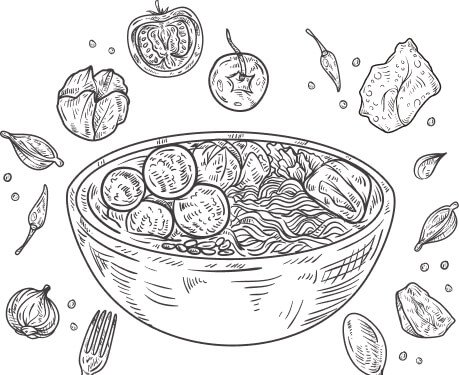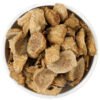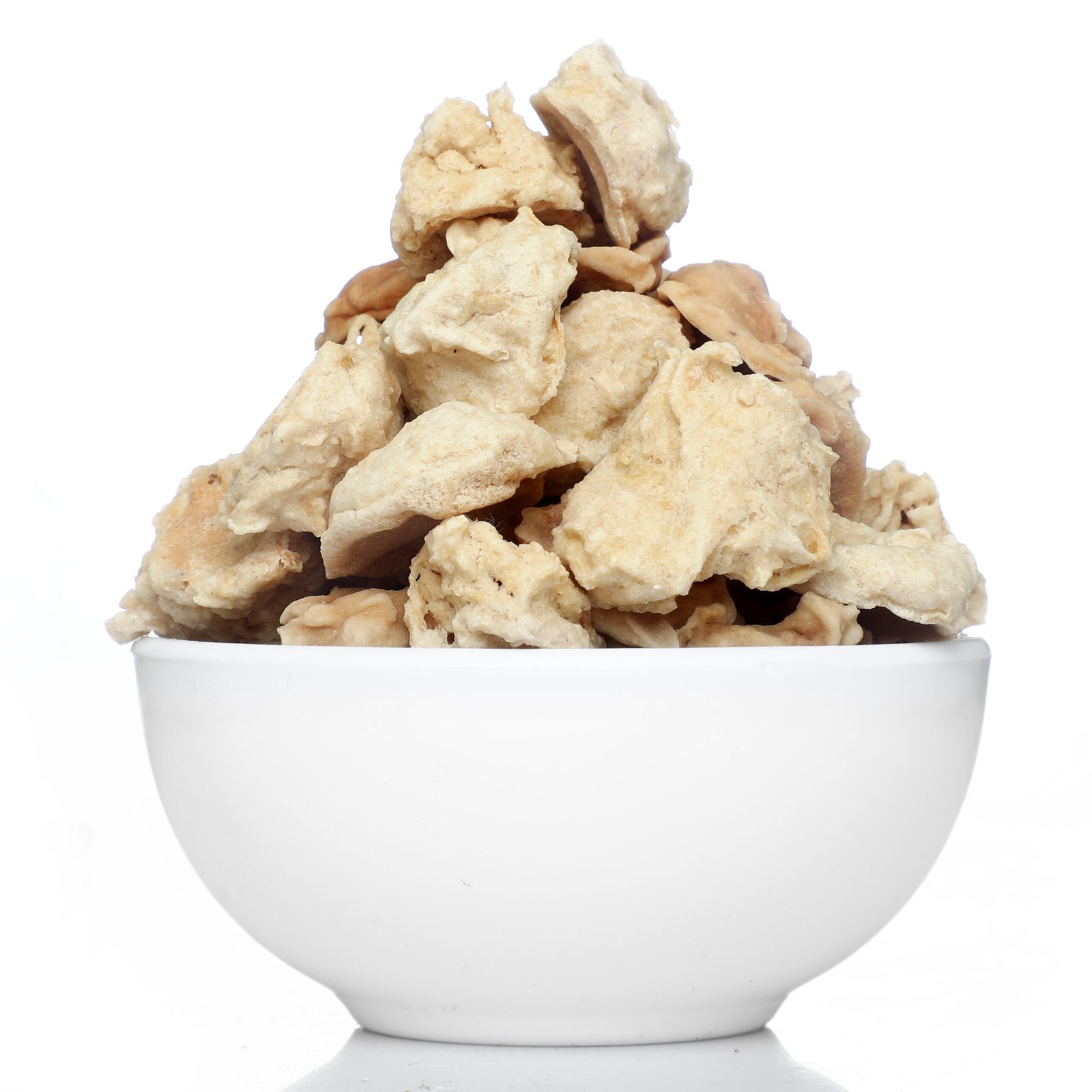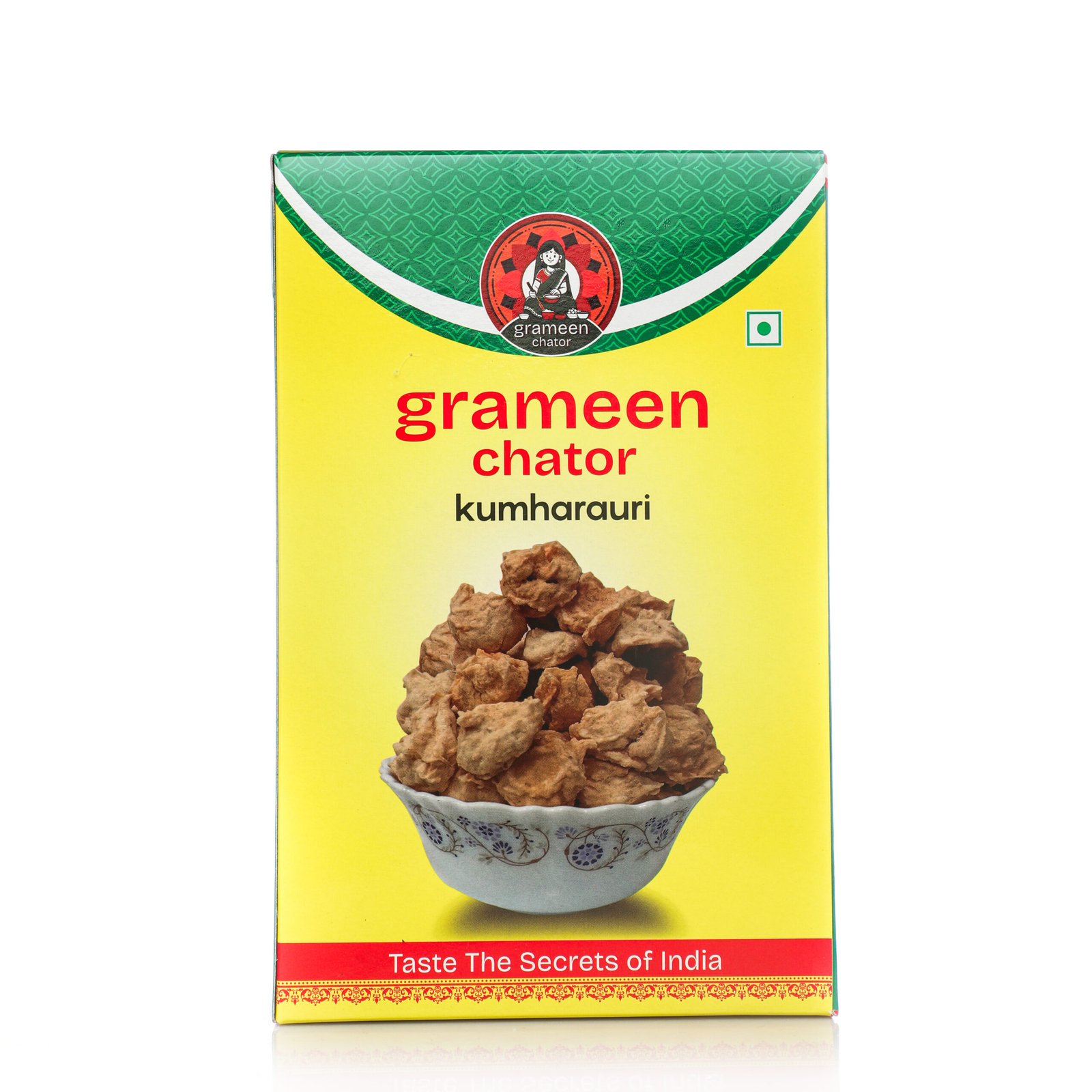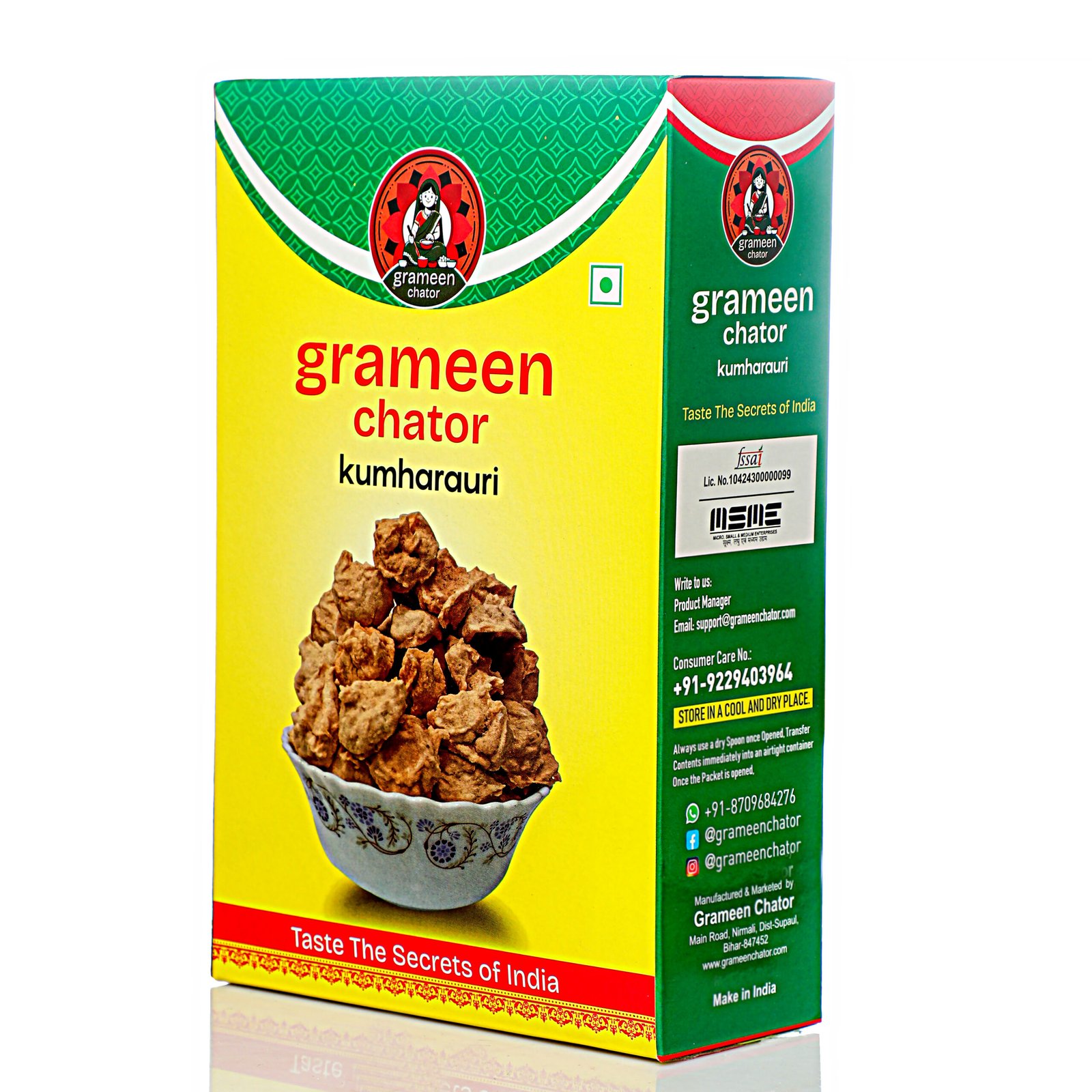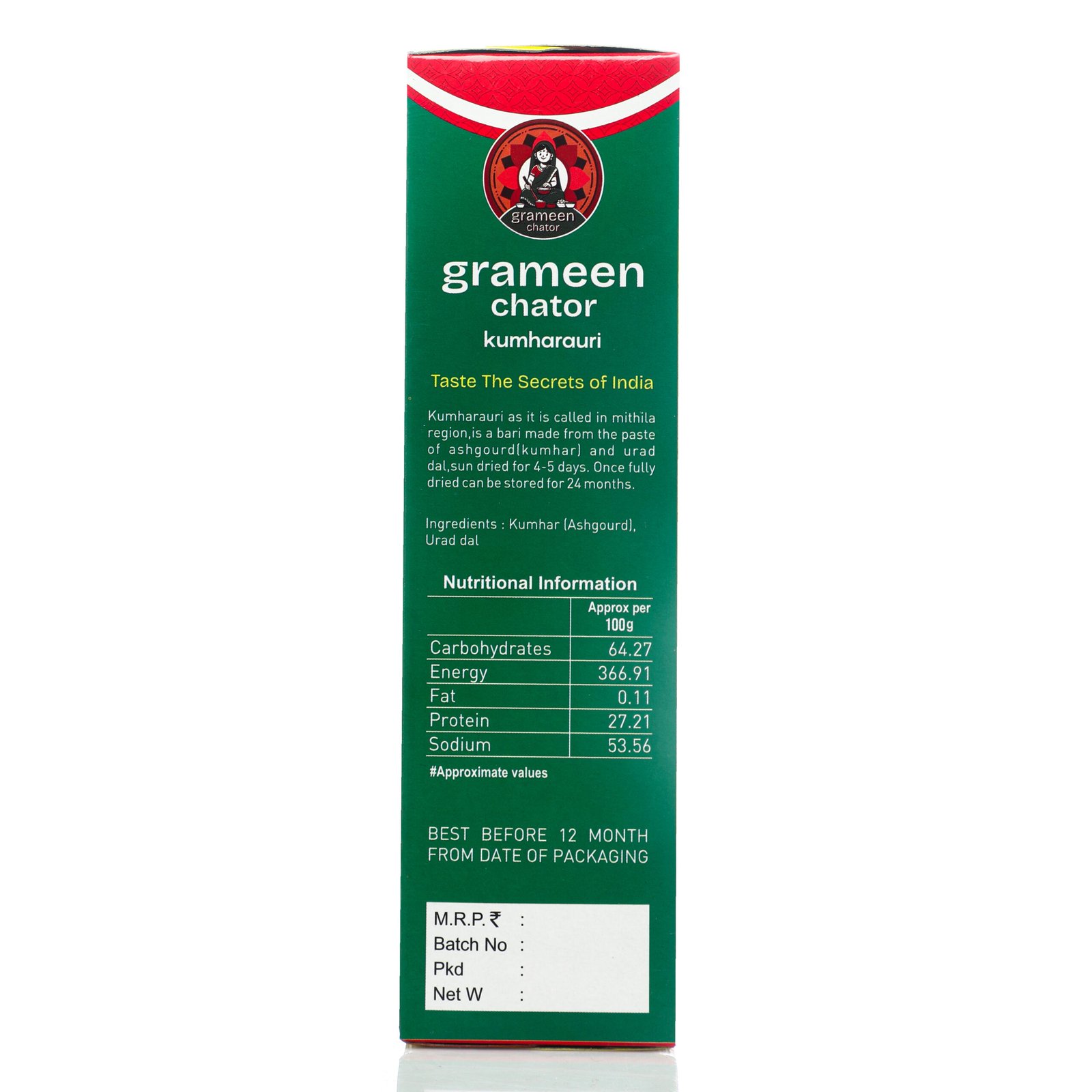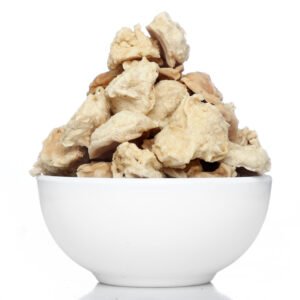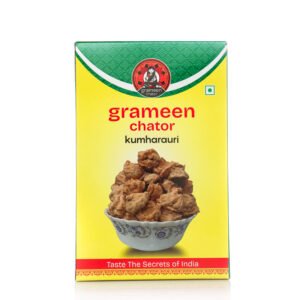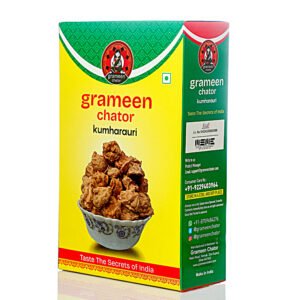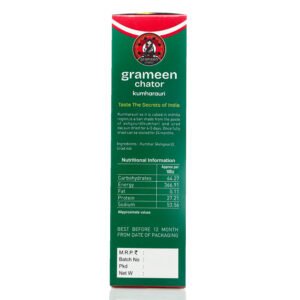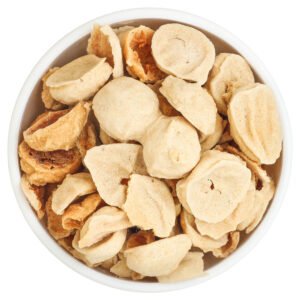What is kumharauri?
Kumharauri is a type of bari, a traditional Indian dried lentil or vegetable cake. Made primarily from ash gourd and a variety of seeds, Kumharauri is a staple in Indian culinary traditions, especially in regions where this method of preserving and preparing food is common.
Ingredients: The key ingredient in Kumharauri is ash gourd, also known as winter melon or white gourd. It is combined with various seeds and spices to create a flavorful and nutritious bari.
Flavor Profile: Kumharauri has a subtle sweetness from the ash gourd, balanced by the nutty flavor of the seeds and the aromatic spices used in its preparation. This blend of flavors creates a unique and satisfying taste.
Texture: As a bari, Kumharauri is characterized by its firm, dense texture after drying. The ash gourd and seeds contribute to a chewy and slightly crunchy consistency, making it a hearty addition to meals.
Nutritional Benefits: Ash gourd is known for being low in calories and high in water content, providing essential vitamins and minerals such as vitamin C and potassium. The seeds add healthy fats, proteins, and additional nutrients, enhancing the overall nutritional profile of Kumharauri.
Kumharauri can be used in a variety of dishes, often added to curries, stews, or enjoyed as a side dish. Its traditional preparation method and blend of flavors make it a cherished part of Indian cuisine.
History of kumharauri
Kumharauri is a traditional Indian bari with deep roots in the culinary practices of India, particularly in regions where ash gourd, also known as winter melon or white gourd, is abundant. The preparation of Kumharauri reflects an age-old technique of preserving vegetables and lentils through drying, a method that dates back centuries and was essential for food sustainability before modern refrigeration.
Historically, Kumharauri emerged from the need to extend the shelf life of seasonal produce and create a nutritious food source that could be stored for extended periods. The use of ash gourd in this bari is significant due to the gourd’s high water content, which makes it a perfect candidate for drying and preservation. Combining ash gourd with urad daal (black gram) and various spices, the preparation of Kumharauri not only enhanced the flavor but also introduced a rich array of textures and nutritional benefits.
The process of making Kumharauri involves peeling and dicing the ash gourd, mixing it with urad daal and spices, and then drying the mixture under the sun or using traditional drying methods. This preservation technique allowed communities to enjoy the flavor and benefits of seasonal produce throughout the year, especially during off-seasons or in times of scarcity.
Over the years, Kumharauri has evolved from a practical food item into a cherished traditional delicacy. Its preparation methods have been passed down through generations, preserving the cultural heritage associated with this bari. Today, Kumharauri is not only valued for its historical significance but also for its unique taste and nutritional qualities, making it a beloved part of Indian cuisine.
Kumharauri continues to be enjoyed in various forms, reflecting the rich culinary traditions and food preservation techniques of India, while contributing to the diverse tapestry of regional flavors and dishes.
